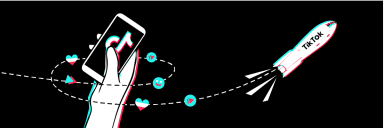There’s no mistaking the impact that digital connectivity is having on global consumers. And as connectivity increases, we’re steadily widening the range of digital activities we engage in, including e-commerce. Everyday, 3.4 billion consumers connect to the internet and spend, on average, six-and-a-half hours online. That figure represents 85% of the global population that’s connected to the internet.
Despite the ubiquity of digital, however, global consumers have not yet fully embraced e-commerce across for many categories, largely those within the fast-moving consumer goods (FMCG) sector. So as manufacturers and retailers seek to capitalize on the opportunity of e-commerce, they need to understand consumers’ online usage, behavior and habits, as well as what’s driving e-commerce adoption. Global online sales in 2017 totaled US$2.3 trillion, representing 10.2% of total retail sales, and we expect that proportion to reach 17.5% by 2021.
CONNECTIVITY IS LAYING THE FOUNDATION FOR E-COMMERCE GROWTH
The rise in internet connectivity is paving the way for e-commerce across many global markets, as detailed in Nielsen’s recent Connected Commerce report, which provides insight into the global connected consumer, shopping traits, category evolution and barriers, to identify future growth potential.
As detailed in the report, fashion, travel and books/music are the top three categories that consumers shop for online, at 61%, 59% and 49%, respectively, across markets globally.
For online consumers, connectivity is a significant enabler: It has improved consumers’ ability to search and compare products and services; it highlights product availability and prices; and it fosters product order and delivery at desired locations and times. As manufacturers and retailers satisfy consumers’ need for convenience and easy delivery, consumers are becoming more open to buying other categories online, such as consumer durables, entertainment items, home care products, alcoholic beverages and FMCG items like fresh grocery, packaged grocery and baby care products.
Consumers’ growing willingness to expand their online purchasing behaviors, particularly to include food, highlights the evolving dynamics of the e-commerce landscape as well as opportunities for markets around the world in the years ahead.

With increased connectivity and improvements in infrastructure, the obstacles to online purchasing will continue to decrease. For example, secure payment methods and alternate mobile wallets are being rolled out in many markets, which provide consumers with additional trust and payment options.
With convenience being a primary facilitator of connected commerce, shoppers are looking for frictionless experiences that saves time, reduces obstacles and provides an enjoyable experience. Consumers’ considerable willingness to try different options for purchasing, payment and delivery has grown over the years. Same-day replacement, free delivery for high-value orders, responsiveness and money back for incorrect orders are some of the features that highly encourage consumers to purchase consumable products online. Retailers offering these features while creating new avenues for online payments will improve consumers’ adoption of e-commerce across FMCG and other evolving product categories.
For additional insights, download Nielsen’s Connected Commerce report.


